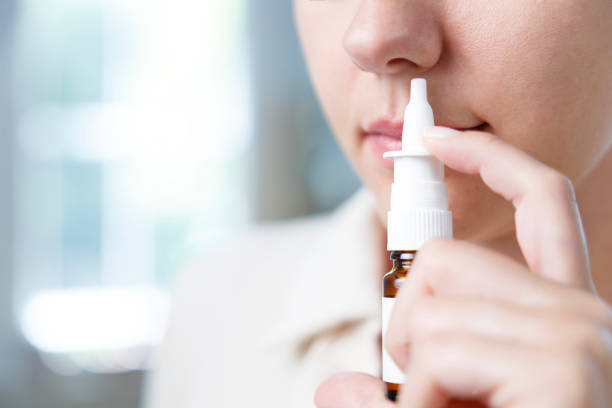USP Nasal Spray Pump Delivery Efficiency Testing
The USP Nasal Spray Pump Delivery Efficiency Test is a critical procedure ensuring that nasal spray pumps deliver medication accurately and effectively as prescribed. This test aligns with the United States Pharmacopeia (USP) standards, which are widely recognized in the pharmaceutical industry for their rigorous quality specifications.
Quality managers and compliance officers rely on this testing to validate the performance of nasal pump sprays, ensuring they meet regulatory requirements and patient safety expectations. R&D engineers also use these tests to optimize formulations and design improvements for nasal spray pumps. Proper delivery ensures that the medication reaches its intended target in the nasal cavity effectively.
The test involves several steps, including specimen preparation, setup of the testing apparatus, calibration, and execution of the test protocol. The primary aim is to measure the volume of liquid dispensed by the pump at each actuation under controlled conditions. This ensures that the delivery efficiency complies with USP specifications.
Calibration of the equipment is paramount for accurate results. The pump spray is placed in a specially designed holder, and the apparatus is connected to a collection container. The pump is actuated multiple times (typically 10-20), and the collected liquid volume is measured. This process is repeated under various conditions to assess consistency and variability.
The test results provide data on delivery efficiency, which helps in assessing whether the nasal spray pump meets the USP guidelines for accuracy and repeatability. Compliance officers use this information to ensure that products meet regulatory standards before they hit the market.
Understanding the real-world implications of accurate delivery is crucial. For instance, a nasal spray designed to deliver 0.1 ml per actuation should consistently dispense this volume under all conditions. Any deviation could lead to either under-treatment or over-treatment, both of which are harmful to patients. This test ensures that such discrepancies are minimized.
The USP guidelines also specify the use of specific apparatus and methods for conducting these tests. These include precise measurement tools and standardized procedures to ensure reliability. The testing process is designed to be rigorous yet reproducible, ensuring consistent results across different batches or models of nasal spray pumps.
Given the importance of this test in pharmaceutical quality assurance, it's crucial to select a reputable laboratory that adheres strictly to these guidelines. Our facility uses state-of-the-art equipment and trained personnel to ensure accuracy and consistency in testing.
Applied Standards
| Standard | Description |
|---|---|
| USP NF 712 | Details the requirements for nasal sprays, including pump delivery efficiency. |
| ASTM E3086-20 | Pertains to the testing of aerosol containers, which includes nasal spray pumps. |
| ISO 10943:2015 | Covers the biocompatibility evaluation of medical devices like nasal sprays. |
Customer Impact and Satisfaction
- Ensures product compliance with USP guidelines, enhancing patient trust and safety.
- Provides consistent quality across batches, reducing variability in treatment outcomes.
- Supports regulatory approval processes by meeting stringent testing requirements.
- Facilitates continuous improvement of nasal spray pump designs through accurate data.
Environmental and Sustainability Contributions
Our laboratory adheres to strict environmental policies, ensuring that the testing process is conducted with minimal impact on the environment. By accurately validating products before they reach the market, we minimize waste and ensure resource-efficient production.
The tests also contribute to sustainable practices by supporting long-term product reliability, which reduces the need for rework or recalls. This not only saves resources but also enhances patient satisfaction and trust in pharmaceutical brands.





